TIDE Tibbo Integrated Development Environment
At Tibbo, we pride ourselves on the fact that we have been supplying the building blocks for miniature network-enabled embedded devices (a.k.a. “Internet of Things devices”) right from our inception in 2001.
From the very beginning, Tibbo has set out to fulfill this mission statement:
To provide the hardware and software that simplify and speed up the creation of IoT devices*.
To this end, we have developed a line of easy-to-use hardware, Tibbo OS (TiOS), high-level Tibbo BASIC and Tibbo C programming languages, as well as Tibbo IDE (TIDE) software for Windows. Tibbo programmable hardware offering includes our modular Tibbo Project System (TPS), as well as controllers, boards, and IoT modules. Finally, our AggreGate server is one of the most sophisticated IoT integration solutions on the market.
Unlike hobby-level platforms like Arduino, Tibbo IoT products deliver professional-grade IoT enablement and are ideally suited for IIoT (Industrial Internet of Things), data collection, remote control, and industrial automation applications.
* This is a new edit. Our mission statement originally referred to “embedded systems.” Tibbo was in the IoT business long before the term “IoT” became popular.
Code in battle-tested BASIC and C languages reincarnated as Tibbo BASIC and Tibbo C. Familiar to millions and easy to learn, BASIC and C are perfect for developing cool IIoT and automation applications.
In our world, Tibbo BASIC and C are equals. BASIC is not simpler. C isn’t faster. Choosing one over another is largely a matter of personal preference and habit. In fact, you can even mix BASIC and C code within a single project!
Tibbo BASIC and C are thoroughly documented. We spent an enormous time making sure our Programming Manual is brief yet comprehensible. So, buy your programmable device, install TIDE, take a look at the Manual, and start creating amazing IIOT products!
Many programming languages mix the language itself with input/output facilities of specific hardware.
For example, a printf statement in C prints a line of text onto the “default output”, which is often a screen.
Tibbo BASIC and Tibbo C are pure in a sense that they are completely free of any and all I/O.
Tibbo BASIC/C applications are event-driven and asynchronous.
Whenever something interesting happens, the system generates an event, which your Tibbo BASIC/C program can respond in the corresponding event handler.
Most I/O operations are asynchronous. For example, if you use tcp.send your code won’t have to wait until the sending is complete. The sock object will handle the sending in the background while your application is free to keep on crunching code.
Separated from the core of Tibbo BASIC and C, all input and output capabilities of Tibbo hardware are accessible through objects.
For example, the print method of the lcd object (lcd.print ) outputs text onto a display screen.
The lcd object is only available on platforms representing Tibbo devices that have (or may be connected to) a screen.
We haven’t just copied what was available, but reimagined and improved upon the standard features of BASIC and C.
For example, the Tibbo C language, while having its roots in the ANSI C standard, supports BASIC-style strings and functions like left(), instr(), chr(), and asc(). This is highly unusual but is also extremely useful. Try this and see for yourself!
To have this level of control over the features of Tibbo BASIC and C we needed to create our own compilers and tools, and so we did!
Other editors may keep gaining weight and visual clutter with every release, but our Tibbo IDE (TIDE) software for Windows stays light, agile, and pleasing to the eye — all while packing a ton of features. Good things don’t need a gig of drive space, folks. Enjoy the right kind of lean!
Download: TIDE 5
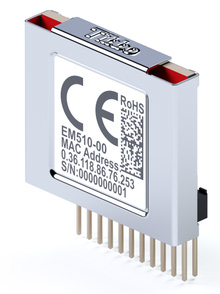
EM510 Single UART Programmable Embedded Module
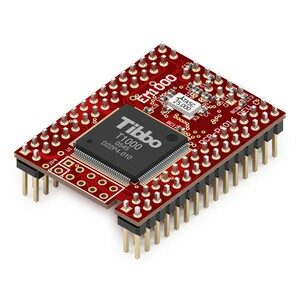
EM1000 Quad High Speed UART Programmable Embedded IoT Module
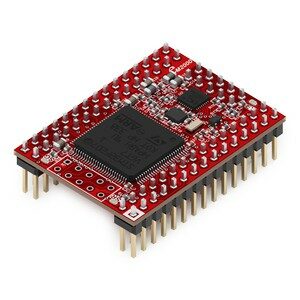
EM2000 Programmable IIoT Module
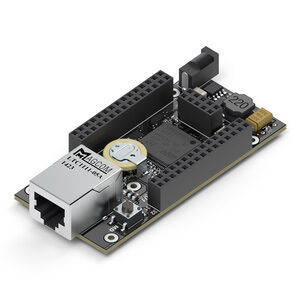
EM2001 Programmable IIoT Board
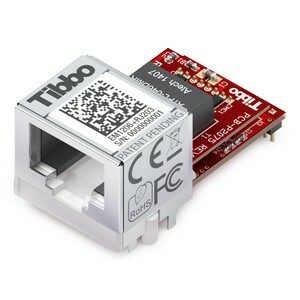
EM1206 Quad High Speed UART Programmable Embedded IoT Module
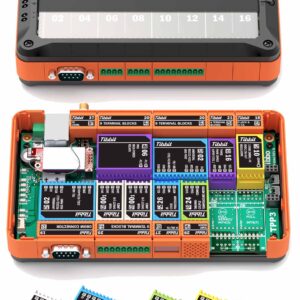
TPS Tibbo Project System Programmable IoT Platform